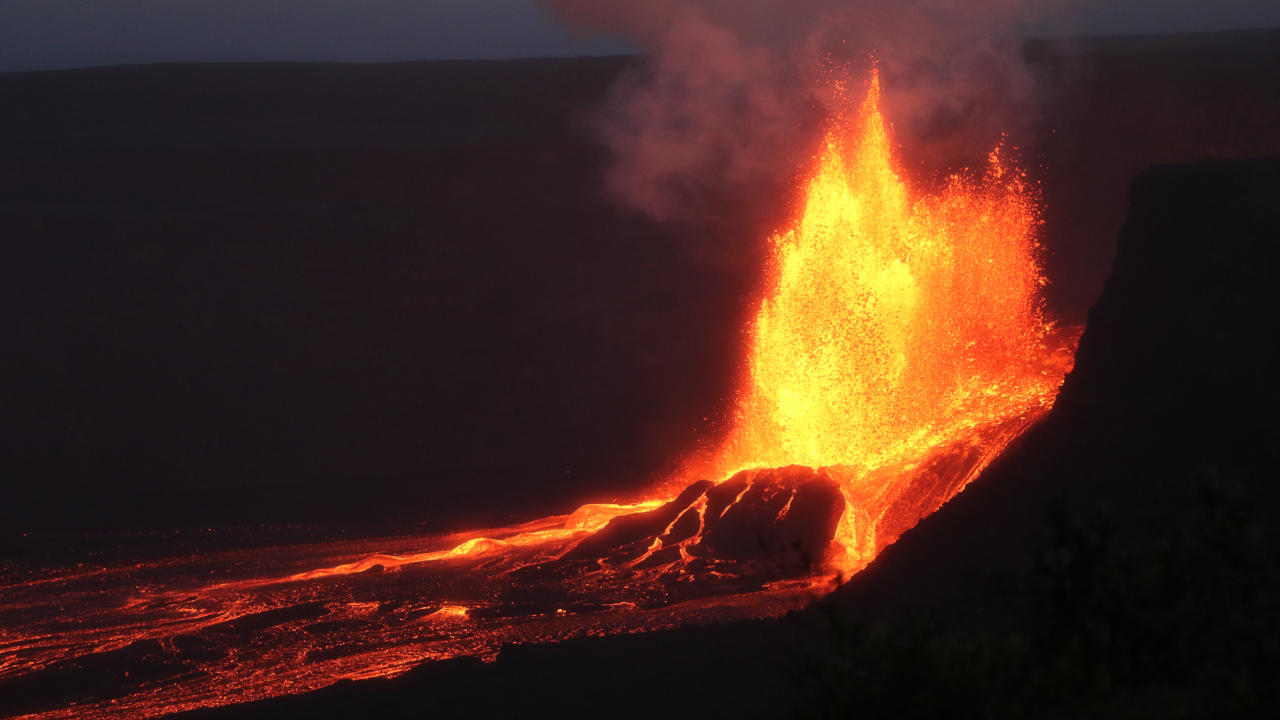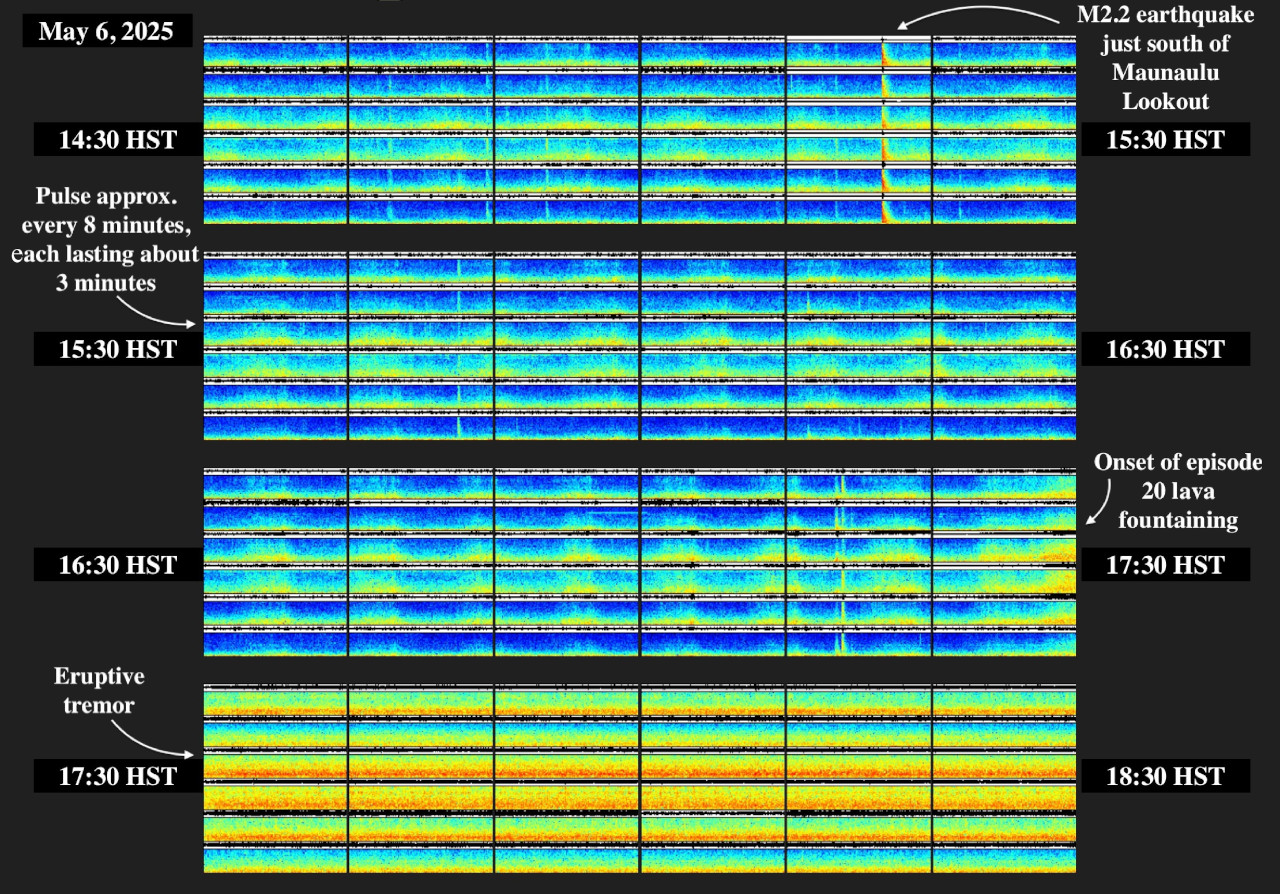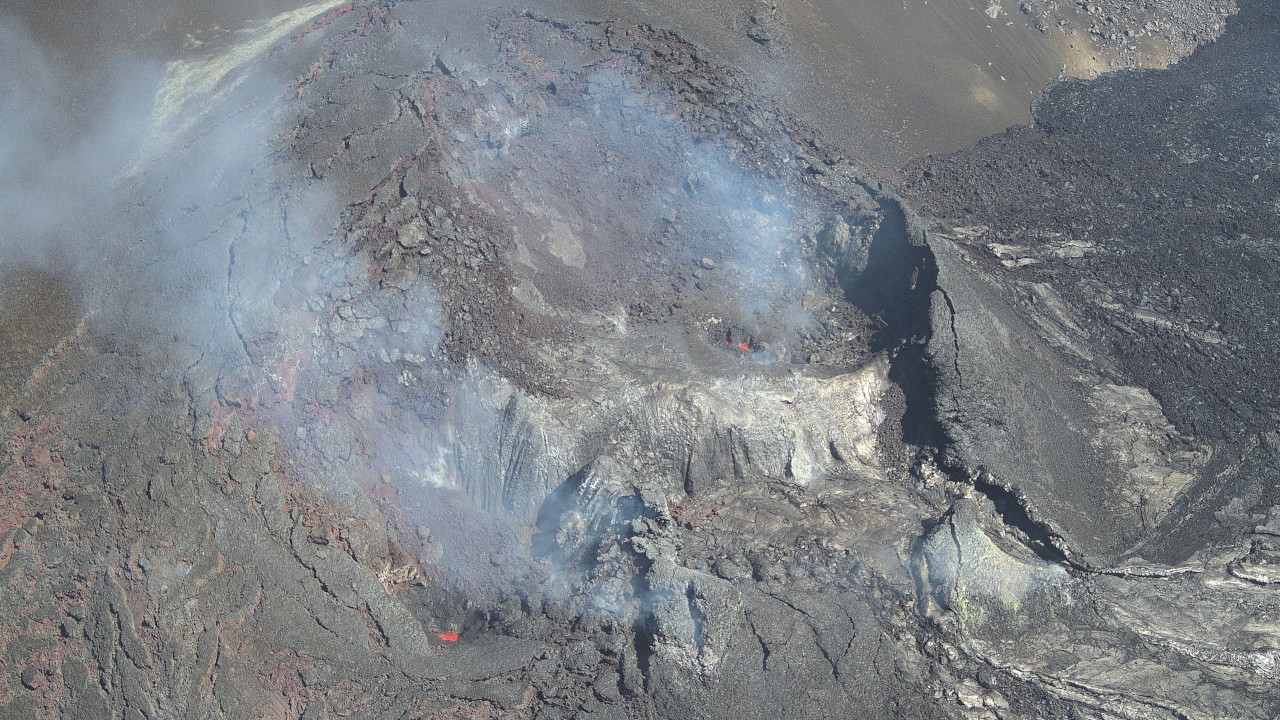(BIVN) – Episode 23 precursory activity in the ongoing Kīlauea summit eruption is still underway, with sustained fountaining likely to start by Saturday.
The latest Volcano Watch from the USGS Hawaiian Volcano Observatory article examines the seismic activity that is being recoded between fountaining episodes.
This week’s article was written by RCUH geophysicist Maddie Hawk:
Witnessing a volcanic eruption is, for many, a once-in-a-lifetime experience. Hawaiʻi Volcanoes National Park welcomes well over a million visitors from around the world every year, and many of these visitors hope to see lava erupting in person. As enthralling as each eruptive episode is, experts at the USGS Hawaiian Volcano Observatory watch just as closely at what’s happening between episodes.

USGS: “During episode 20 of the ongoing eruption in Halemaʻumaʻu at the summit of Kīlauea, lava fountains reached about 500 feet (152 meters). The crater wall behind the vents is 492 feet (150 meters) high, and this photo shows that the top of the fountain from the north vent is reaching slightly higher than the crater wall. Lava falling from the fountain cascades over the cone formed by past eruptive episodes, feeding lava flows onto the crater floor.” (USGS photo by K. Mulliken)
For Island of Hawaiʻi residents, the recent eruptive episodes at Kaluapele (Kīlauea’s summit caldera) generously offer many chances to view the mesmerizing lava fountains. Opposed to other recent eruption locations like Kīlauea’s East or Southwest Rift Zone, the summit caldera eruptions are accessible to the public. A ride down Crater Rim Drive and a one-mile walk offers one of the best viewing areas near Keanakākoʻi Crater, though other areas along the caldera rim also offer stunning views from farther away.
Prior to the onset of this eruption in December 2024, Island of Hawaiʻi earthquake counts had reached some of the highest levels in recorded history here. Just last summer, some weekly tallies exceeded 2,000 earthquakes across the island. Some of these earthquakes are magma creating new pathways in the volcano, breaking rocks along the way. When magma erupts, this process of rock breaking stops, and earthquake counts dwindle as a result. In the last five months, Island of Hawaiʻi weekly earthquake counts have rarely exceeded 500.
Though there aren’t as many earthquakes around Kīlauea summit during the ongoing eruption, the ground below Kaluapele is not exactly quiet. During an eruptive episode, the roar of lava fountains shows up on seismic data channels as eruptive tremor. It is a constant, loud, unmistakable signal shared across eruptions and it is associated with large volume fluid movement. Though tremor increases with the onset of each fountaining episode, it has not completely disappeared with each pause. The signal is persistent between episodes.

USGS: “This spectrogram shows four hours of USGS Hawaiian Volcano Observatory data streams across six seismic stations at Kīlauea’s summit on May 6, 2025. Each panel is 10 minutes of data. Over the four-hour period, an earthquake, pulsing, and eruptive tremor are visible.”
Between fountaining episodes, the persistent tremor can vary in intensity due to the vent geometry, gas emissions, magma depth, and other factors. Recent pauses have exhibited periods of cyclical low frequency pulsing within the tremor often correlated with the rise and fall of lava in the vent. This process of lava filling the vents and then draining, repeatedly, prior to a new eruptive episode has been visible USGS Hawaiian Volcano Observatory livestream cameras.
Pulsing tremor can indicate magma movement and/or gas transfer within the volcanic system, and it has varied in rhythm, duration, and intensity. One example is the cycle leading up to eruptive episode 20. Pulsing began in earnest about nine hours before lava fountaining appeared on May 6, just before 5:30 p.m. HST. Each pulse lasted around 3 minutes, at a rate of about 8 pulses per hour.
However, the pause between episodes 17 and 18 displayed pulses that were closer to 10 minutes long, with only 2-3 occurring every hour. Though pulsing is common immediately before or after an eruptive episode, it is not consistent. Unlike the onset of episode 20, episode 19 began without being immediately preceded by tremor pulsing. Also, we cannot assume that the pulsing ceases during eruptive episodes, as the loud tremor would cover up any weaker signals.
Recognizing seismic patterns, or lack thereof, can contribute to our understanding of what is happening below the surface. Studying these patterns alongside geodetic data (how the Earth contracts and expands with volcanic activity), changes in gas emissions, and changes in magma compositions gives us the best chance to understand the complex volcanic system beneath our feet.


by Big Island Video News7:23 am
on at
STORY SUMMARY
HAWAIʻI VOLCANOES NATIONAL PARK - While there aren't many earthquakes around Kīlauea summit during the ongoing eruption, the ground below Kaluapele is not exactly quiet, scientists say.